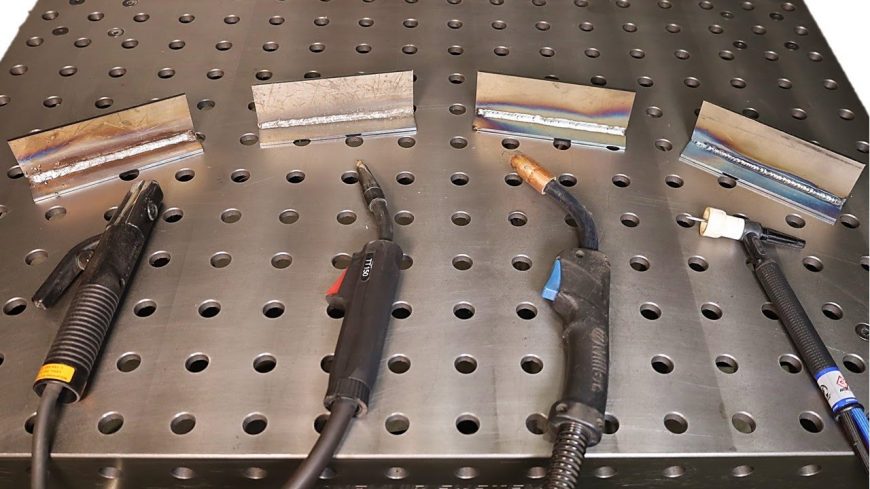4 Types of Welding Explained and When to Use Each

When it comes to welding, we find that it’s much of an art as it is a science. It’s certainly one of those things that is a very valuable talent to be able to add to the tool belt, that’s for sure. A good welder can make a living across a variety of different industries and can charge a pretty good amount of money if they do a good enough job. Those who are the best at welding can even make quite a small fortune from it.
However, that’s not the side of the trade that we’re going to look at this time. Instead of thinking about being an expert of the trade, this time, we’re going to take you to the ground floor. At the end of the day, everybody has to get in somewhere and today, we seek out that entry-level welding information to really get going.
Before we get to the point where we’re re-creating the Mona Lisa with a welder, we need to know a little bit about each type of welding. You see, each variation has its own pros, cons, and things to look out for. Depending on the material that you’re using and exactly what your goals are with the project, MIG, TIG, Stick, and Flux Core welding might be the right variation to dive into.
For those looking to get into the world of welding but don’t know exactly what any of that means, now is your time to shine. Down in the video, TimWelds does the diligence of breaking down exactly what the differences are between these types of welding and when they might be put in place. Sure, this might just be your first step but think of it this way: you’re on your way toward becoming the welder that you’ve always wanted to be!

